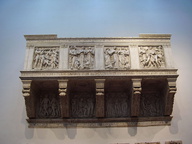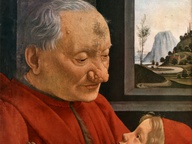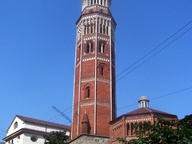Pixels of Ubuntu/Unhu: Exploring all the different facets of social, physical and cultural identities of our contemporary societies from the past, present and future
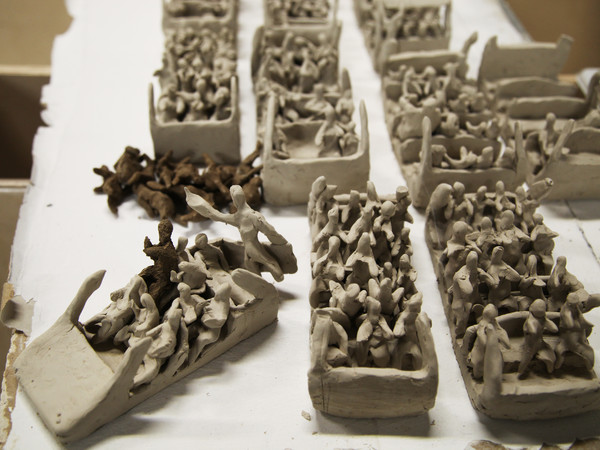
Urban Totems. 2015. Raphael Chikukwa. Masimba Hwati
Dal 09 Maggio 2015 al 22 Novembre 2015
Venezia
Luogo: Biennale Chiesa e Istituto Santa Maria della Pietà / Pad. Zimbabwe
Indirizzo: Castello 3703/a
Orari: da martedì a domenica 10-18
Curatori: Raphael Chikukwa
E-Mail info: info@biennale.org
Sito ufficiale: http://www.biennale.org
The three artists will conceive a new complex of works, incorporating video, prints, drawings, objects, and sound for the six galleries of the Zimbabwe Pavilion. Our identity and its place in the global sphere has always been a source of inspiration for the Zimbabwean Pavilion at Venice and this year’s theme Pixels of Ubuntu/Unhu – Exploring the social and cultural identities of the 21st century continues the interrogatory nature of the Zimbabwe Pavilion at la Biennale di Venezia.
The Minister of Sports, Arts and Culture said about the Zimbabwe Pavilion, “ The 2015 exhibition carries further the discourse on the appreciation and practice of Ubuntu/Unhu. As the elders say, ‘umuntu ngumuntu ngaBantu/ munhu munhu navanhu’. It is the deep-seated Afrocentric assertion that, ‘I am because we are’ which is the cornerstone of our identity as African people. The artworks will show the convergence of tradition and modernity through the eyes of the eyes and perspectives of the three artists representing Zimbabwe at this global art event, La Biennale di Venenzia.”
Chikonzero (Chiko) Chazunguza
Chikonzero Chazunguza was born on 13 January 1967 and raised in the high-density suburb of Highfields, in Harare, Zimbabwe. In 1987, he won a scholarship to study at the Institute of Pictorial Arts in Sofia Bulgaria, where he earned his MFA and was trained in the classical modes of printmaking, drawing and painting. He spent 7 years in Bulgaria witnessing how the country was going through major changes. In 1994 he returned to Zimbabwe in search of uniting his modern European training with indigenous Zimbabwean art. In 2009 Chiko moved to Canada where he was confronted with the contrasting realities of ’here and there’. Chiko established an artist resource center, Dzimbanhete Arts Interaction on the outskirts of Harare, which is still striving and could be an answer to the future of Zimbabwean contemporary art. He is the recipient of numerous awards and has exhibited in several solo shows in Africa, Europe and North America. He lives and works in Zimbabwe.
Chikonzero Chazunguzais a visual artist and provocateur, whose multidisciplinary artworks raise searching questions about the postcolonial condition and about the unstable role and nature of art in its postcolonial context. Amongst his most compelling works are those that reinstate for the viewer, a sense of ritual order and of life’s deeper mysteries, alongside proffering incisive, yet subtle social and political analysis. Chiko deliberately sets out to re-connect with local modes of fabrication and visuality, exploring their areas of aesthetic overlap with Western traditions to produce new visual forms and new kinds of visual experiences. In his paintings, prints as well as in his installations he is known for experimenting with a variety of materials, including objects of everyday African life, challenging issues of subtle colonial conditions in Africa on land distribution, food insecurity, degradation of indigenous spirituality, traditional order and rituals. His latest body of work interrogates memory, history and identity culminating in Maputura the pace we want to be.
Masimba Hwati
Masimba Hwati was born in 1982, and grew up in one of Harare’s oldest high density suburb of Highfields where he attended School. He completed his formal education in Mhondoro and in Highfields, and then went on to embark on a visual arts course at the Harare Polytechnic from 2001 to 2003 where he majored in Ceramics and Painting earning a first class diploma in Fine Art. He has collaborated with several artists from Detroit, South Africa and the Southern African region. His work is in several private collections around the world. Deeply intrigued by the history of cultures in 2013 he undertook an independent study of the Culture and History of black people in Nova Scotia, Canada. He works with historical and contemporary themes experimenting with objects’ symbolism and perceptions. Masimba currently lives and works in Zimbabwe working at the Harare Polytechnic where he teaches visual arts, and is currently one of the 3-dimensional art instructors.
Masimba Hwati is interested in the memory and energy of traditional objects and the space they occupy in the urban world. His work explores the transformation and evolvement of Indigenous knowledge systems. Masimba says, “I’m looking at how these systems co-exist with current paradigms .The idea of “Harmonic incongruence” and juxtaposition of esoteric cultural elements with Modern mainstream symbolism is an underpinning factor in this thought process. The Institution of Ubuntu is a universal moral and ethical code that transcends geography and cultures; it is quantum thinking expressed in human relations. It is the essential link of man to Divinity. In my work this idea is explored through my personal and cultural lens and is connected to a larger universal context”. The dialogue contained in his work questions the “thinking” behind today’s modern thought and explores the altruistic possibilities that exists in non-material cultures. His Urban totems series questions whether technology’s pixilating of our Ubuntu/Unhu has enhanced or distorted our humanity.
Gareth Nyandoro
Gareth Nyandoro was born in Bikita Masvingo in 1982. Gareth trained at Masvingo Polytechnic, Harare Polytechnic and Chinhoyi University of Technology. Street life and the human interaction that accompanies it are recurring themes in Gareth Nyandoro’s work. Around the world, markets are public places where vendors have a chat and present their wares in the most attractive way possible. In Harare, Zimbabwe this is done on a piece of cloth on the sidewalk, so vendors can quickly grab their things as soon as the police arrive to arrest them for trading illegally. Gareth has exhibited widely both in Zimbabwe, Africa and abroad. He has had more than 5 residencies and is currently on a residency at the Rijksakademie van Beeldende Kunsten in the Netherlands.
Gareth Nyandorocombines images of vendors with found materials which he processes by employing idiosyncratic variations on traditional craft techniques. He weaves with paper. Nyandoro produces prints not by using an engraved copper plate, but by cutting directly into the paper, sponging ink onto it and finally removing the top layer of paper with tape so the ink is only left behind in the cuts. A technique he calls “KUCHEKACHEKA”. He attempts to simulate the market environment by combining two-dimensional collages with three-dimensional objects. The fragile, ephemeral quality of his work references the temporary nature of the marketplace. Gareth’s installations bring the two – dimensional and three – dimensional components together through drawing, props, and objects to create works reflecting his research in relation to space, narrative, or storytelling, and materials as they are altered and transferred. In Venice, he will work with these diverse aspects of his practice to create two distinct rooms, with common themes unifying and resonating in the entire space with the other artists, relating to the present condition of Zimbabwean identity. His Mushika Shika Yevanhu installations examine in minute detail whether the new age transitional marketplace and associated identities of the touts, vendors and audience have a lasting impact on our humanity, history and culture; whether they define who we are as a people.
Comissioner Doreen Sibanda
Doreen Sibanda has been working in the visual arts sector in Zimbabwe for more than thirty years. She began her career in 1981 as the Education Officer at the National Gallery of Zimbabwe, where she was appointed to set up an Education Department for the institution. A critical thinker and a proponent of the role of education in art, Sibanda has been an influential figure in the newly independent Zimbabwe. Her various formal and informal platforms include working as an art critic, private gallery owner, newspaper columnist, published author, artist and curator. Career highlights include being invited to curate the Zimbabwe Pavilion at the first Johannesburg Biennale and participating in numerous exhibitions in Zimbabwe, Mozambique, Germany, the Czech Republic, South Korea, Russia and Mali.
Sibanda has been the Executive Director of the National Gallery of Zimbabwe since 2004. She has navigated the institution through its most difficult times, managing through her positive outlook to maintain a vibrant exhibition program with more than twenty shows each year. She is the author of Zimbabwe Stone Sculpture: A Retrospective 1957 – 2004 and co – author of The National Gallery of Zimbabwe: Celebrating 50 Years, 1957 – 2007. She was the Commissioner of the first and second Zimbabwe Pavilions in Venice at the Venice Biennale in 2011 and 2013. She has contributed an essay to a book on local photographer Calvin Dondo, published by Africalia in 2013.
The Minister of Sports, Arts and Culture said about the Zimbabwe Pavilion, “ The 2015 exhibition carries further the discourse on the appreciation and practice of Ubuntu/Unhu. As the elders say, ‘umuntu ngumuntu ngaBantu/ munhu munhu navanhu’. It is the deep-seated Afrocentric assertion that, ‘I am because we are’ which is the cornerstone of our identity as African people. The artworks will show the convergence of tradition and modernity through the eyes of the eyes and perspectives of the three artists representing Zimbabwe at this global art event, La Biennale di Venenzia.”
Chikonzero (Chiko) Chazunguza
Chikonzero Chazunguza was born on 13 January 1967 and raised in the high-density suburb of Highfields, in Harare, Zimbabwe. In 1987, he won a scholarship to study at the Institute of Pictorial Arts in Sofia Bulgaria, where he earned his MFA and was trained in the classical modes of printmaking, drawing and painting. He spent 7 years in Bulgaria witnessing how the country was going through major changes. In 1994 he returned to Zimbabwe in search of uniting his modern European training with indigenous Zimbabwean art. In 2009 Chiko moved to Canada where he was confronted with the contrasting realities of ’here and there’. Chiko established an artist resource center, Dzimbanhete Arts Interaction on the outskirts of Harare, which is still striving and could be an answer to the future of Zimbabwean contemporary art. He is the recipient of numerous awards and has exhibited in several solo shows in Africa, Europe and North America. He lives and works in Zimbabwe.
Chikonzero Chazunguzais a visual artist and provocateur, whose multidisciplinary artworks raise searching questions about the postcolonial condition and about the unstable role and nature of art in its postcolonial context. Amongst his most compelling works are those that reinstate for the viewer, a sense of ritual order and of life’s deeper mysteries, alongside proffering incisive, yet subtle social and political analysis. Chiko deliberately sets out to re-connect with local modes of fabrication and visuality, exploring their areas of aesthetic overlap with Western traditions to produce new visual forms and new kinds of visual experiences. In his paintings, prints as well as in his installations he is known for experimenting with a variety of materials, including objects of everyday African life, challenging issues of subtle colonial conditions in Africa on land distribution, food insecurity, degradation of indigenous spirituality, traditional order and rituals. His latest body of work interrogates memory, history and identity culminating in Maputura the pace we want to be.
Masimba Hwati
Masimba Hwati was born in 1982, and grew up in one of Harare’s oldest high density suburb of Highfields where he attended School. He completed his formal education in Mhondoro and in Highfields, and then went on to embark on a visual arts course at the Harare Polytechnic from 2001 to 2003 where he majored in Ceramics and Painting earning a first class diploma in Fine Art. He has collaborated with several artists from Detroit, South Africa and the Southern African region. His work is in several private collections around the world. Deeply intrigued by the history of cultures in 2013 he undertook an independent study of the Culture and History of black people in Nova Scotia, Canada. He works with historical and contemporary themes experimenting with objects’ symbolism and perceptions. Masimba currently lives and works in Zimbabwe working at the Harare Polytechnic where he teaches visual arts, and is currently one of the 3-dimensional art instructors.
Masimba Hwati is interested in the memory and energy of traditional objects and the space they occupy in the urban world. His work explores the transformation and evolvement of Indigenous knowledge systems. Masimba says, “I’m looking at how these systems co-exist with current paradigms .The idea of “Harmonic incongruence” and juxtaposition of esoteric cultural elements with Modern mainstream symbolism is an underpinning factor in this thought process. The Institution of Ubuntu is a universal moral and ethical code that transcends geography and cultures; it is quantum thinking expressed in human relations. It is the essential link of man to Divinity. In my work this idea is explored through my personal and cultural lens and is connected to a larger universal context”. The dialogue contained in his work questions the “thinking” behind today’s modern thought and explores the altruistic possibilities that exists in non-material cultures. His Urban totems series questions whether technology’s pixilating of our Ubuntu/Unhu has enhanced or distorted our humanity.
Gareth Nyandoro
Gareth Nyandoro was born in Bikita Masvingo in 1982. Gareth trained at Masvingo Polytechnic, Harare Polytechnic and Chinhoyi University of Technology. Street life and the human interaction that accompanies it are recurring themes in Gareth Nyandoro’s work. Around the world, markets are public places where vendors have a chat and present their wares in the most attractive way possible. In Harare, Zimbabwe this is done on a piece of cloth on the sidewalk, so vendors can quickly grab their things as soon as the police arrive to arrest them for trading illegally. Gareth has exhibited widely both in Zimbabwe, Africa and abroad. He has had more than 5 residencies and is currently on a residency at the Rijksakademie van Beeldende Kunsten in the Netherlands.
Gareth Nyandorocombines images of vendors with found materials which he processes by employing idiosyncratic variations on traditional craft techniques. He weaves with paper. Nyandoro produces prints not by using an engraved copper plate, but by cutting directly into the paper, sponging ink onto it and finally removing the top layer of paper with tape so the ink is only left behind in the cuts. A technique he calls “KUCHEKACHEKA”. He attempts to simulate the market environment by combining two-dimensional collages with three-dimensional objects. The fragile, ephemeral quality of his work references the temporary nature of the marketplace. Gareth’s installations bring the two – dimensional and three – dimensional components together through drawing, props, and objects to create works reflecting his research in relation to space, narrative, or storytelling, and materials as they are altered and transferred. In Venice, he will work with these diverse aspects of his practice to create two distinct rooms, with common themes unifying and resonating in the entire space with the other artists, relating to the present condition of Zimbabwean identity. His Mushika Shika Yevanhu installations examine in minute detail whether the new age transitional marketplace and associated identities of the touts, vendors and audience have a lasting impact on our humanity, history and culture; whether they define who we are as a people.
Comissioner Doreen Sibanda
Doreen Sibanda has been working in the visual arts sector in Zimbabwe for more than thirty years. She began her career in 1981 as the Education Officer at the National Gallery of Zimbabwe, where she was appointed to set up an Education Department for the institution. A critical thinker and a proponent of the role of education in art, Sibanda has been an influential figure in the newly independent Zimbabwe. Her various formal and informal platforms include working as an art critic, private gallery owner, newspaper columnist, published author, artist and curator. Career highlights include being invited to curate the Zimbabwe Pavilion at the first Johannesburg Biennale and participating in numerous exhibitions in Zimbabwe, Mozambique, Germany, the Czech Republic, South Korea, Russia and Mali.
Sibanda has been the Executive Director of the National Gallery of Zimbabwe since 2004. She has navigated the institution through its most difficult times, managing through her positive outlook to maintain a vibrant exhibition program with more than twenty shows each year. She is the author of Zimbabwe Stone Sculpture: A Retrospective 1957 – 2004 and co – author of The National Gallery of Zimbabwe: Celebrating 50 Years, 1957 – 2007. She was the Commissioner of the first and second Zimbabwe Pavilions in Venice at the Venice Biennale in 2011 and 2013. She has contributed an essay to a book on local photographer Calvin Dondo, published by Africalia in 2013.
SCARICA IL COMUNICATO IN PDF
biennale chiesa e istituto santa maria della piet pad zimbabwe ·
chikonzero chazunguza ·
masimba hwati ·
gareth nyandoro
COMMENTI

-
 Dal 27 marzo 2025 al 27 luglio 2025
Milano | Pirelli HangarBicocca
Dal 27 marzo 2025 al 27 luglio 2025
Milano | Pirelli HangarBicocca
Yukinori Yanagi. Icarus
-
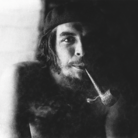 Dal 27 marzo 2025 al 30 giugno 2025
Bologna | Museo Civico Archeologico
Dal 27 marzo 2025 al 30 giugno 2025
Bologna | Museo Civico Archeologico
CHE GUEVARA tú y todos
-
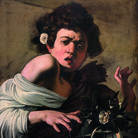 Dal 27 marzo 2025 al 20 luglio 2025
Firenze | Villa Bardini
Dal 27 marzo 2025 al 20 luglio 2025
Firenze | Villa Bardini
Caravaggio e il Novecento. Roberto Longhi, Anna Banti
-
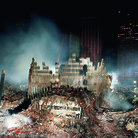 Dal 25 marzo 2025 al 24 agosto 2025
Brescia | Museo di Santa Giulia
Dal 25 marzo 2025 al 24 agosto 2025
Brescia | Museo di Santa Giulia
Joel Meyerowitz. A Sense of Wonder. Fotografie 1962-2022
-
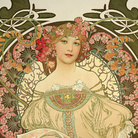 Dal 22 marzo 2025 al 20 luglio 2025
Ferrara | Palazzo dei Diamanti
Dal 22 marzo 2025 al 20 luglio 2025
Ferrara | Palazzo dei Diamanti
Alphonse Mucha / Giovanni Boldini
-
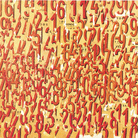 Dal 22 marzo 2025 al 08 giugno 2025
Venezia | Ca’ Pesaro – Galleria Internazionale d’Arte Moderna
Dal 22 marzo 2025 al 08 giugno 2025
Venezia | Ca’ Pesaro – Galleria Internazionale d’Arte Moderna
Raoul Schultz. Opere 1953-1970
